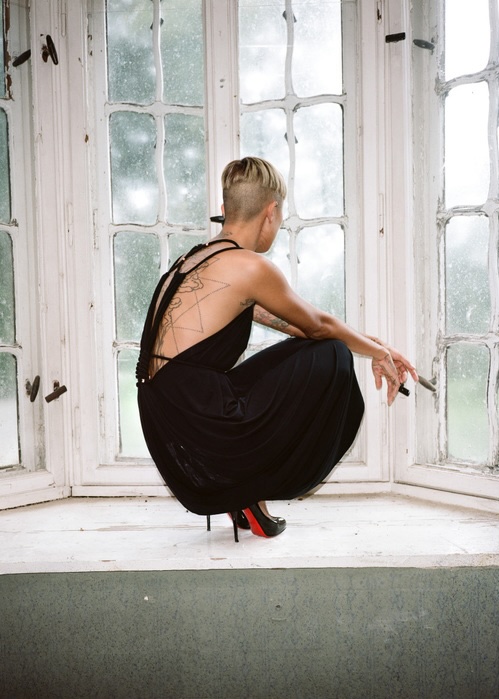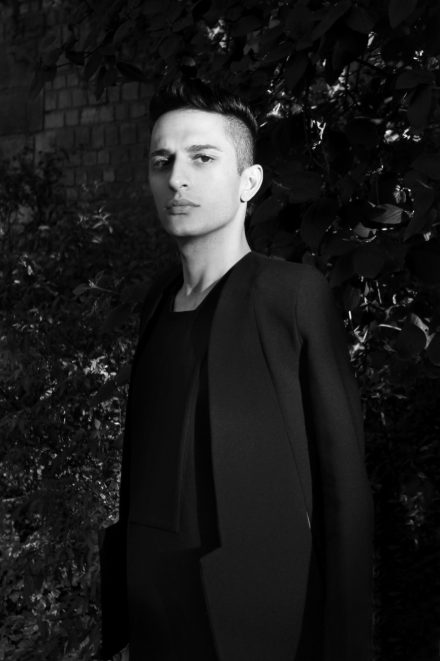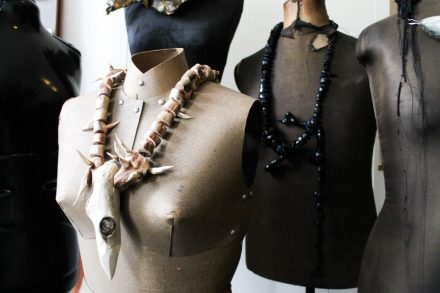Don’t Shoot The Messengers by Jen Gilpin is one of Berlin’s well-known labels with it’s very own aesthetic to say the least. A high-quality brand focusing on natural materials and craftsmanship yet in the most evocative way possible. Recently she moved her atelier and boutique to Torstraße 161, which sounded like a perfect reason for Œ Magazine to stop by for a little chat.
Jen, how do you start your day?
Well.. If I have a normal ritual, which happens every once in a while, I start working at 1 pm until 3 am because I like to work at night. In the afternoon I work with a small team in the DSTM office to sort things out and do the administrations. I have to take care of every part of the business; of the shop and our customers, our wholesale clients but also of the production and the accountancy. Then at night I start designing and developing our new collection.
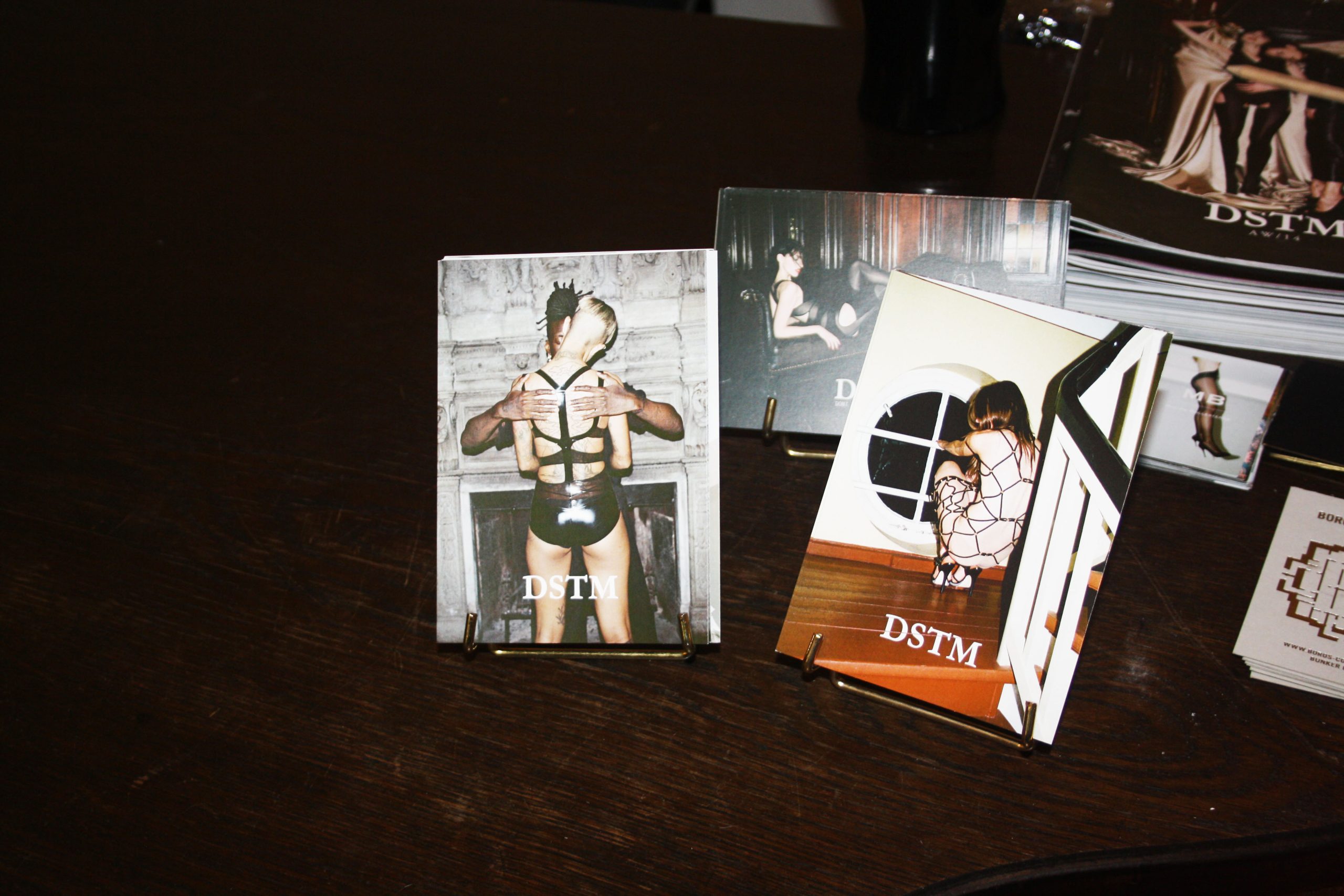
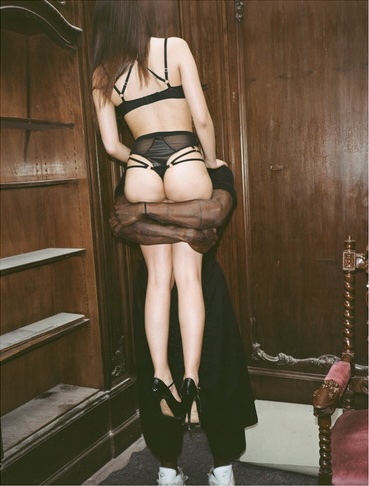
Your brand’s aesthetic is somehow provocative; can you futher define that style and explain where it derives from?
We want to radiate some sort of dark, sexy elegance and are always trying to find the boundary of what is socially acceptable, something that shows in our range of bodywear. This is the third label I have right now, I already had two brands back in Canada where I grew up and I can’t say that they are really disconnected either. It has been a development over a long period of time. I’ve worked for Agent Provocateur in London and one of my very first jobs at age 15 was in a lingerie shop. I’ve always loved lingerie so digging deeper into that is really interesting. A lot of it started with geometry in pattern cutting and trying to create different shapes. And black of course, it’s such a beautiful color to experiment with shapes. Colors have so much to say but I’m more interested in speaking within the form of a piece. So it really has been a developing story.
What’s the message you want to tell with DSTM?
I don’t directly want to actually tell a certain message. It is not something that I can’t put into words. We look into the general subconscience and try to bring out something more. Something that is in the dream world or the animalistic one. Our brand is an ever-changing story that is developed every season, not only by us but also through the close relationship with our customers. We are lucky to get immediate feedback that we can translate and use for our next collections, which makes DSTM an even more personal and stronger label.
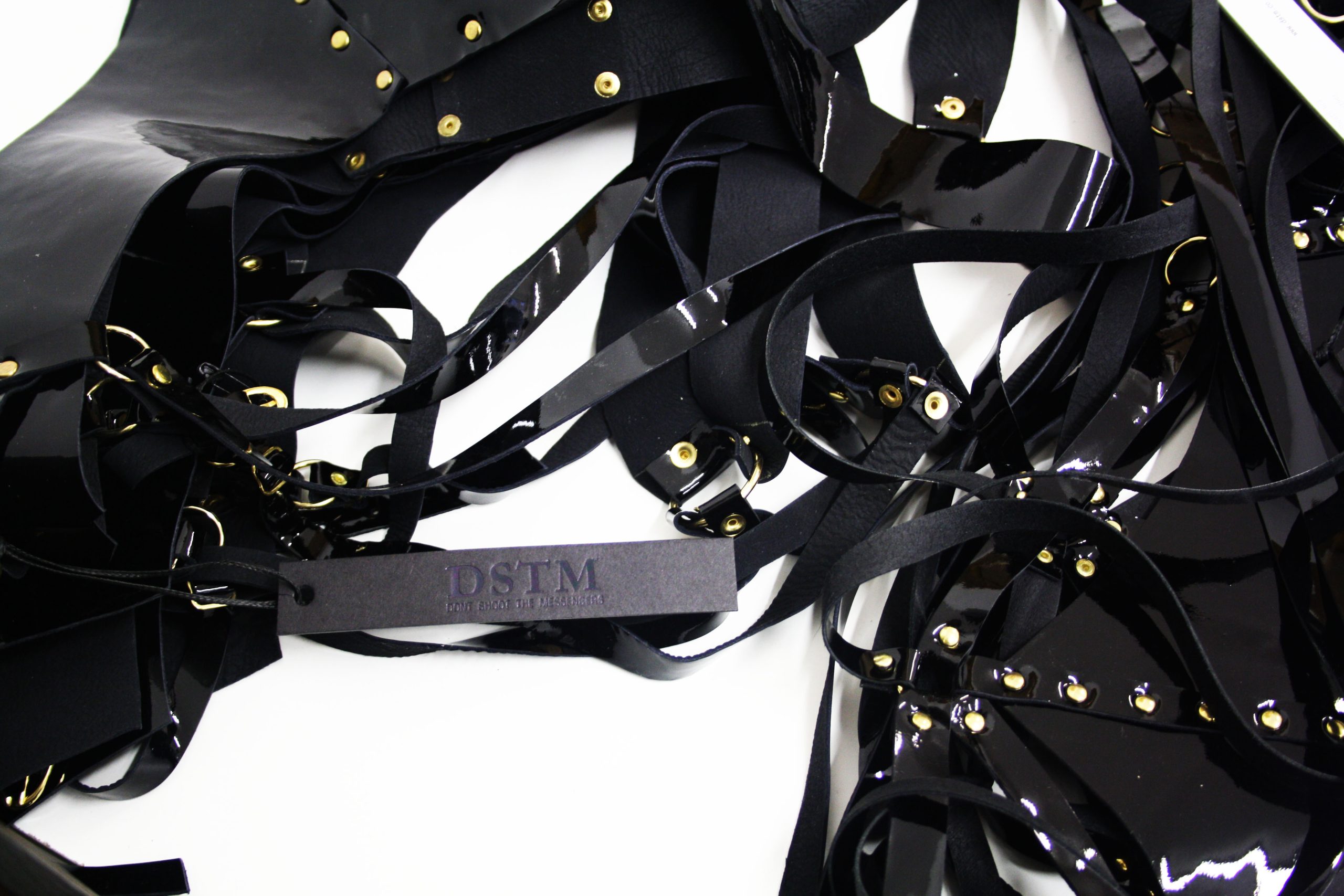
How did you get to the combination of fetish and couture?
For me it was a really nice way to combine geometry with straps and leather. I absolutely adore leather; it’s like a second skin. We started to mix this with fabric, which creates a nice contrast, but we also solely use leather for pieces that relate to the bodywear as well. You can say there is a fetish movement in fashion at the moment but even then we always try to stand out. I find my inspiration in all kind of things, architecture being a big source. A lot of my work is draped, designing is not a straightforward thing. The goal is always in the middle of the final product and the pathway can come from many different sides.

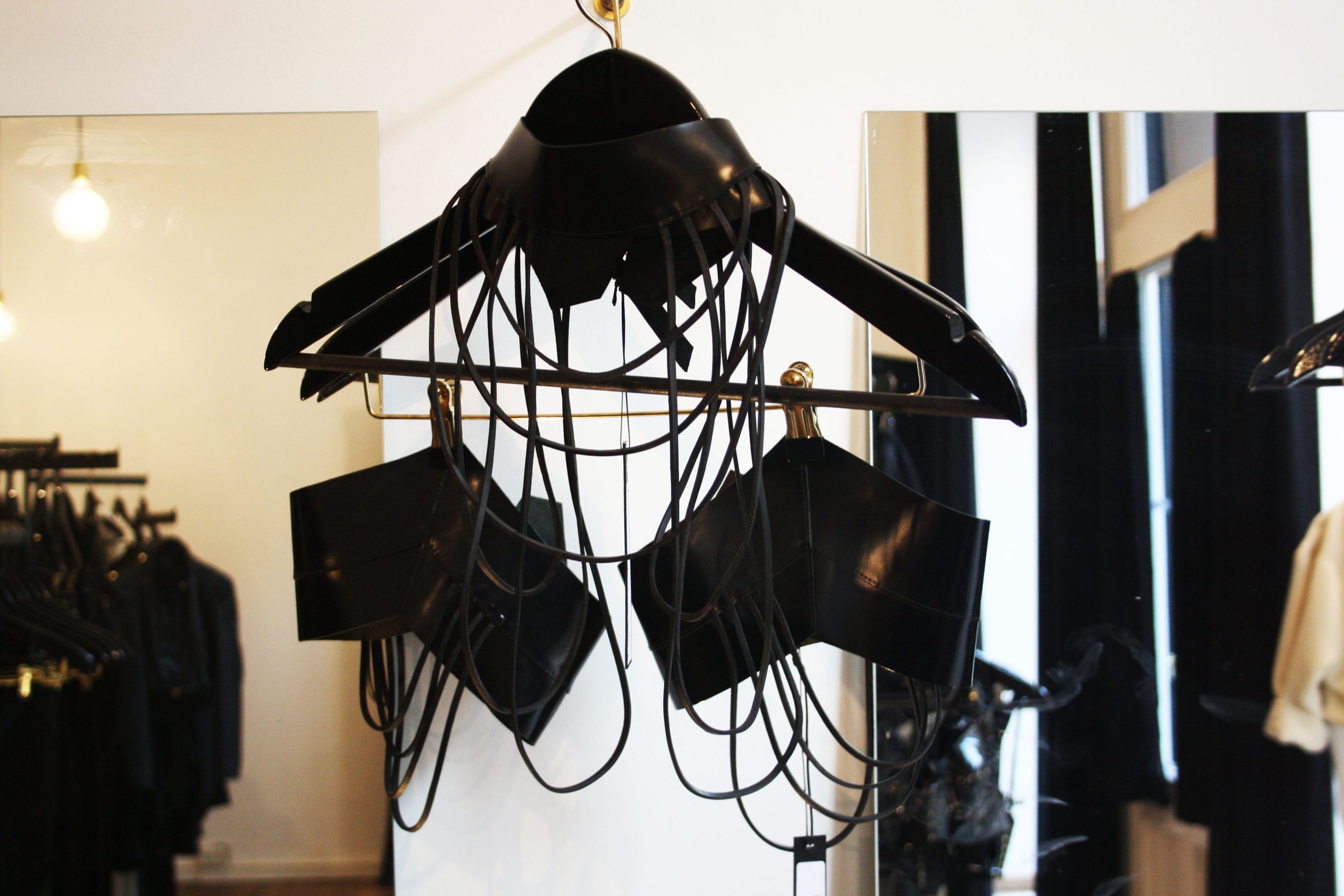
Triangles are an ever-returning element in your work. ‘Geometry in relation to the body is key for us,’ you once said. Where does this fascination come from?
I’ve always been obsessed with geometry and science. I did a big research on geometry and tried to make clothing relatable to that. I also looked at the proportions within the body; If you look at the primary lines of the body you will find triangle shapes everywhere. That is the starting point of all our creations.
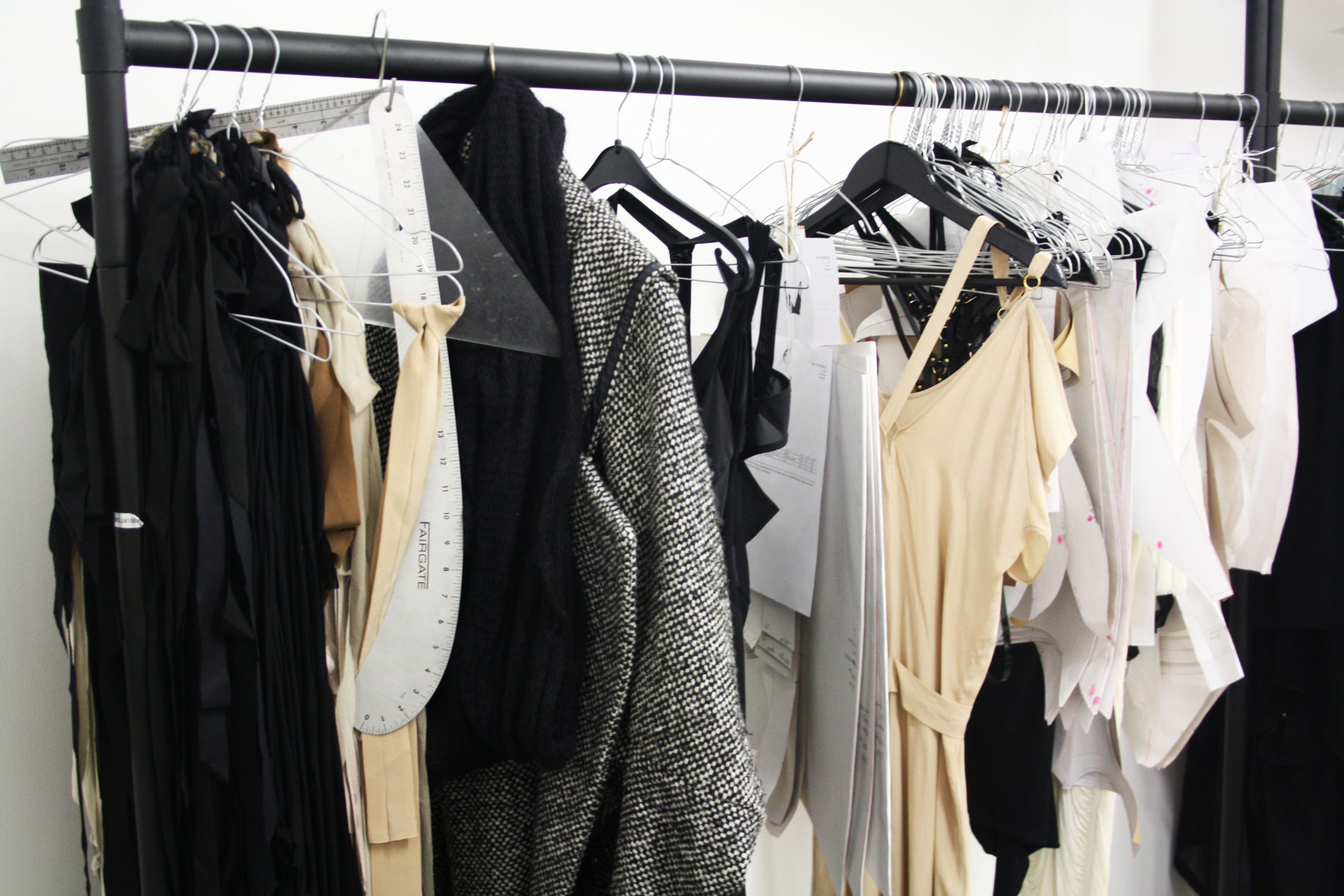
As said before a lot of experimental techniques and craftsmanship are put into your creations. What do you do to stay challenging and innovative?
We try to work with new materials or techniques every season. For example last season we did rope work for the first time as well as leather weaving. That resulted into a beautiful leather harness.
We always have some accessories in the collection that are handmade. Of course we sometimes look back at our previous collections and want to explore more with a specific craft. I love working manually, it’s really beautiful and satisfying to work with my hands and put real effort in every single piece. Nevertheless I think it’s also good to have restrictions and put yourself within a certain theme or a time limit to keep the story all together. This can lead to utterly interesting final results.
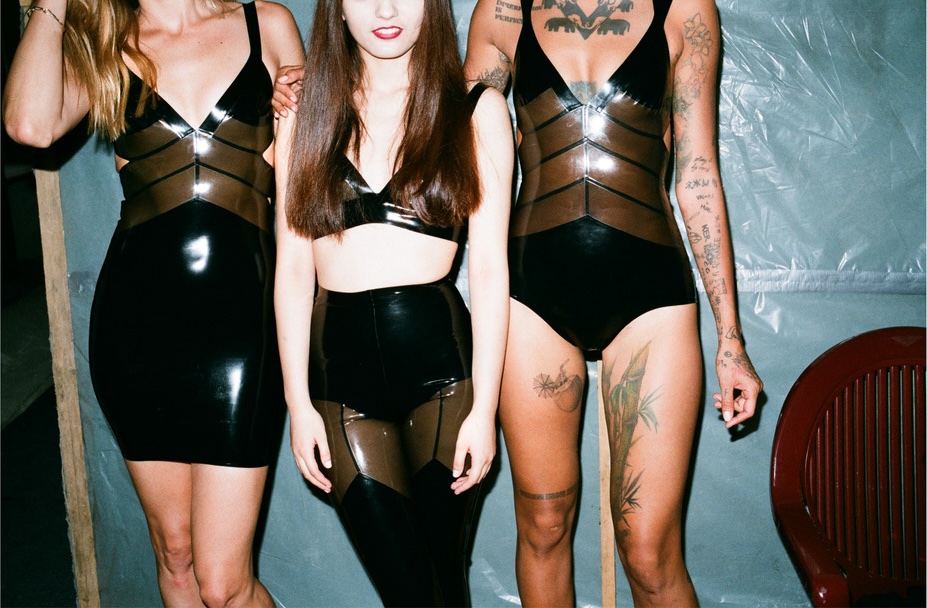
Ever since you started your collection you have worked together with your life partner and well-known photographer Maxime Ballesteros. He has captured all your collections so far. What makes the combination between you two so outstanding?
He’s my favorite soundboard, I can share all my ideas with him and he always gives me the best feedback. I also get many ideas from him; he’s such an inspiring person. We work really closely together for the shoots and each season we developed the brand even further into what it is right now. We talk before the shoot and after and reflect on our work and see what we want to do for the next collection.
You embody Berlin’s historical liberal and creative culture, is that why you chose this city to start up your company?
I always loved Europe and Berlin. It’s a great place for people from all over the world to come here. There’s a huge expat scene and the prices are so low for a capital. The European market is also more exciting for me, there are a lot of small boutiques and partners to work with. This city encourages my creative process, there is a lot of space, interesting people and creative events every night.
What will Jen Gilpin surprise us with in the future?
We are moving more and more in the bodywear zone and into lingerie. A really interesting direction, also due to the many combinations and materials you can go with. We are not so interested in trending fashion movements, but we want to create beautiful and fashionable high-quality pieces for our customers.
In the future I also want to focus more on expaning my innovation and technical skills. I studied interdisciplinary design where the emphasis was on ecological responsibility. We now use mostly natural fabrics like cashmere and wools and therefore spend a lot of time touching the fabrics. It’s really important that they are soft to the skin so I try to stay away from materials that are rough or itchy. Now we are starting to move a bit more into the performance fibers especially for the bodywear and bodycon pieces, since there are really interesting developments and progressions within that part of the industry. It’s really all about having an open mind for innovation in technique and materials for the benefit of the brand.
